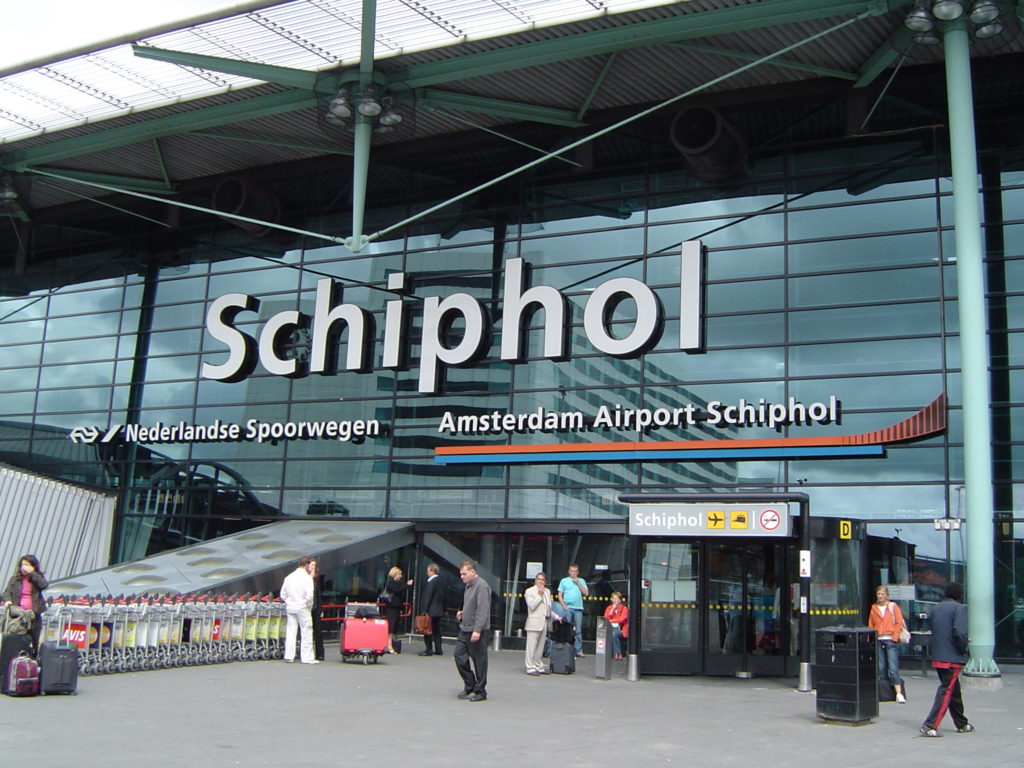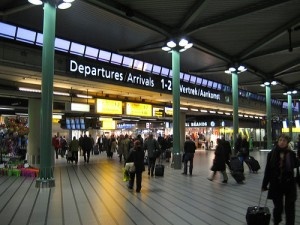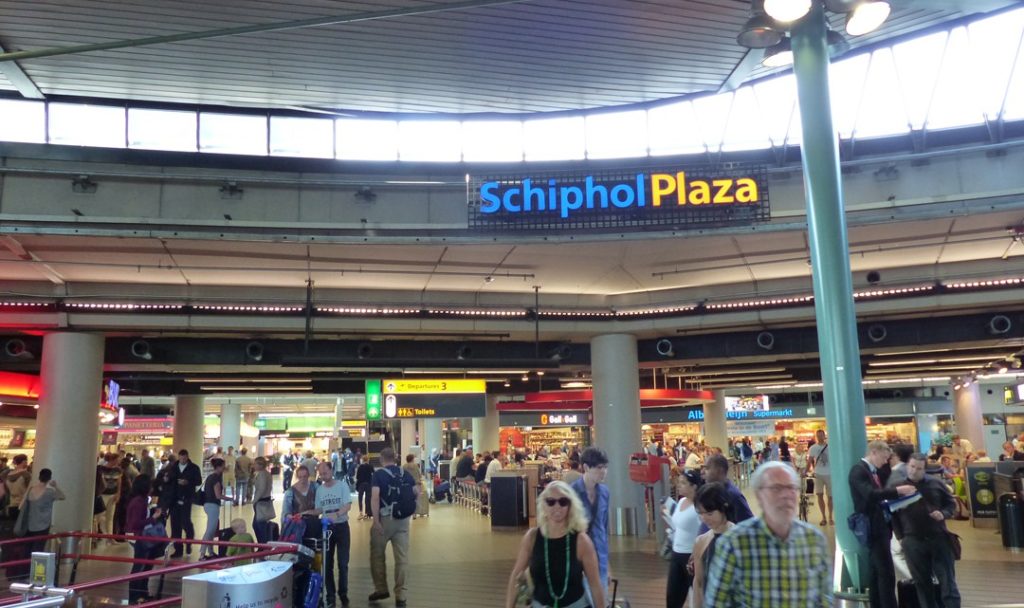An increase in the number of Cubans who requested asylum in the airports of the Netherlands in the last months has caused that the chancellery of that European nation now demands a transit visa for all the travelers of the Island that stop in their territory course to a third country outside the Schengen area, according to the Dutch embassy in Cuba.
Cuban residents on the island who must pass through the air terminals of the Netherlands, with “a destination outside the Schengen area”, will have to apply for a transit visa at the consulate of Havana, explains a note published on the web of the Dutch embassy.
The official text ensures that the new measure “will come into force” on January 29, 2018, but at the consulate they assured via telephone 14ymedio that the requirement “is already in force.”
This new compulsory transit visa, whose price is 71 CUC, “will allow the Dutch authorities to better assess the travel intentions of visa applicants”
“The visa [of transit, also called Visa-A] does not give the traveler access to enter the Netherlands or any other Schengen country, so the traveler is not allowed to leave the airport,” the text states.
This new compulsory transit visa, whose price is 71 CUC, “will allow the Dutch authorities to better assess the travel intentions of visa applicants,” he adds.
Among the requirements to obtain the A-Visa, along with an updated passport, the interested party must complete the forms to request a transit scale through the Schengen area and submit a passport-sized photograph.
When you submit the application “fingerprints will be taken, which will be valid for 5 years.” This is not necessary for some applicants, such as for children under 12 years of age, “the statement said.
The minimum advance notice to submit the application is 15 working days and within 15 calendar days the response will be obtained. Sometimes, however, “more time is required and the processing of the application can last 30 days, or even 60”, the Dutch authorities advise.
The measure had already been applied previously by Spain, which requires transit visas for island residents who use their airports as a stopover to countries outside the Schengen area.
France still does not require Cubans to obtain a transit visa when they stop at their airports for countries outside the Schengen area, unless the traveler has to spend the night at the airport or his stopover is greater than 20 hours. Paris Charles de Gaulle Airport is a recurring stopover from the Island when traveling to Eastern Europe, North Africa and Asia.
Since last January 12, when the Administration of US President Barack Obama eliminated the policy of dry feet / wet feet, thousands of Cubans have changed their migration destinations to other points of the world geography. Uruguay, in South America, and Trinidad and Tobago, in the Caribbean, are two of the most frequented countries at the moment.
PETICIÓN DE ASILO DE CUBANOS EN VIAJE A HOLANDA PROVOCA ACCIÓN EN VISAS.
Un aumento en el número de cubanos que pidieron asilo en los aeropuertos de los Países Bajos en los últimos meses ha provocado que la cancillería de esa nación europea exija ahora un visado de tránsito para todos los viajeros de la Isla que hagan escala en su territorio rumbo a un tercer país fuera del espacio Schengen, según informa la embajada de Holanda en Cuba.
Los cubanos residentes en la Isla que deban pasar por las terminales aéreas de los Países Bajos, con “un destino fuera del área de Schengen”, tendrán que solicitar una visa de tránsito en el consulado de La Habana, explica una nota publicada en la web de la embajada holandesa.
El texto oficial asegura que la nueva medida “entrará en vigor” el 29 de enero de 2018, pero en el consulado aseguraron vía telefónica a 14ymedio que el requisito “ya está vigente”.
Este nuevo visado de tránsito obligatorio, cuyo precio es de 71 CUC, “permitirá a las autoridades holandesas evaluar mejor las intenciones de viajes de los solicitantes del visado”
“El visado [de tránsito, también llamado Visado-A] no da acceso al viajero para entrar en los Países Bajos o cualquier otro país de Schengen. Por lo tanto, al viajero no se le permite dejar el aeropuerto”, precisa el texto.
Este nuevo visado de tránsito obligatorio, cuyo precio es de 71 CUC, “permitirá a las autoridades holandesas evaluar mejor las intenciones de viajes de los solicitantes del visado”, agrega.
Entre los requisitos para obtener el Visado-A, junto a un pasaporte actualizado, el interesado debe rellenar los formularios para solicitar una escala de tránsito por el espacio Schengen y entregar una fotografía tamaño carné.
Cuando presente la solicitud “le tomarán las huellas dactilares, que tendrán una vigencia de 5 años. Esto no es necesario para algunos solicitantes, como por ejemplo para los menores de 12 años”, se precisa en el comunicado.
La antelación mínima obligatoria para presentar la solicitud es de 15 días hábiles y en un plazo de 15 días naturales se obtendrá la respuesta. A veces, sin embargo, “se requiere más tiempo y la tramitación de la solicitud puede durar 30 días, o incluso 60”, adiverten las autoridades holandesas.
La medida ya había sido aplicada con anterioridad por España, que exige visados de tránsito a los residentes de la Isla que utilicen sus aeropuertos como escala hacia países no pertenecientes al espacio Schengen.
Francia todavía no exige a los cubanos una visa de tránsito cuando hacen escala en sus aeropuertos rumbo a países fuera del área Schengen, a no ser que el viajero tenga que pasar la noche en el aeropuerto o su escala sea superior a las 20 horas. El Aeropuerto de París Charles de Gaulle es una escala recurrente desde la Isla cuando se viaja hacia Europa del Este, el Norte de África y Asia.
Desde que pasado 12 de enero, cuando la Administración del presidente estadounidense Barack Obama eliminó la política de pies secos/pies mojados, miles de cubanos han cambiado sus destinos migratorios hacia otros puntos de la geografía mundial. Uruguay,en Sudamérica, y Trinidad y Tobago, en el Caribe, son dos de los países más frecuentados por el momento.
Agencies/14ymedio/Internet Photos/Arnoldo Varona/TheCubanHistory.com
THE CUBAN HISTORY, HOLLYWOOD.








